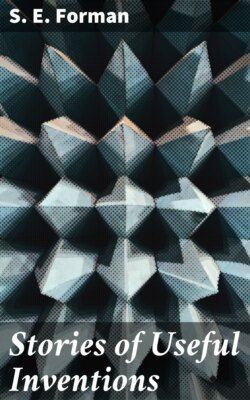Stories of Useful Inventions

Реклама. ООО «ЛитРес», ИНН: 7719571260.
Оглавление
S. E. Forman. Stories of Useful Inventions
Stories of Useful Inventions
Table of Contents
PREFACE
STORIES OF USEFUL INVENTIONS
THE MATCH
THE STOVE
THE LAMP
THE FORGE
THE STEAM-ENGINE
THE PLOW
THE REAPER
THE MILL
THE LOOM
THE HOUSE
THE CARRIAGE
THE CARRIAGE. Continued
THE BOAT
THE CLOCK
THE BOOK
THE MESSAGE
INDEX
FOOTNOTES
Отрывок из книги
S. E. Forman
Published by Good Press, 2019
.....
The discovery made by the Vienna man led to a new kind of match—the chemical match. A practical outfit for fire-making now consisted of a bottle of sulphuric acid (vitriol) and a bundle of splints tipped with sulphur, chlorate of potash, and sugar. Matches of this kind were very expensive, costing as much as five dollars a hundred; besides, they were very unsatisfactory. Often when the match was dipped into the acid it would not catch fire, but would smolder and sputter and throw the acid about and spoil both the clothes and the temper. These dip-splint matches were used in the eighteenth century by those who liked them and could afford to buy them. They did not, however, drive out the old strike-a-light and tinder-box.
In the nineteenth century—the century in which so many wonderful things were done—the fourth step in the development of the match was taken. In 1827, John Walker, a druggist in a small English town, tipped a splint with sulphur, chlorate of potash, and sulphid of antimony, and rubbed it on sandpaper, and it burst into flame. The druggist had discovered the first friction-chemical match, the kind we use to-day. It is called friction-chemical because it is made by mixing certain chemicals together and rubbing them. Although Walker's match did not require the bottle of acid, nevertheless it was not a good one. It could be lighted only by hard rubbing, and it sputtered and threw fire in all directions. In a few years, however, phosphorus was substituted on the tip for antimony, and the change worked wonders. The match could now be lighted with very little rubbing, and it was no longer necessary to have sandpaper upon which to rub it. It would ignite when rubbed on any dry surface, and there was no longer any sputtering. This was the phosphorus match, the match with which we are so familiar.
.....